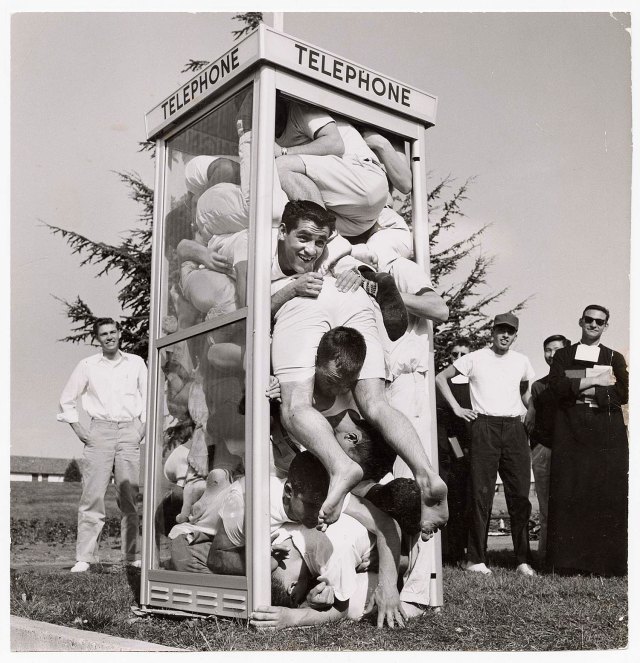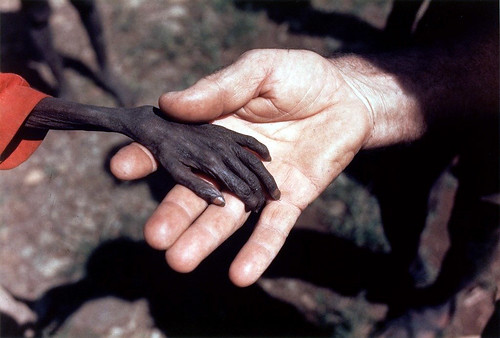I did, however, check out a pair of titles on photography: Picturing the Century, a selection of 157 photos from the National Archives that capture the twentieth century, and LIFE Classic Photographs: A Personal Interpretation, a collection of 50 years worth of LIFE Magazine portraits spanning a broad range of subjects.
The power of these photographs is in their storytelling. Some are simple and others intricate, but all focus on an aspect of life that is vivid and relatable. The cover photos for each book glimpse into lives vastly different but quite relevant:
In one, the working man is portrayed, the wrench and tension exemplifying the grueling work undertaken to build and sustain this country, corporate interests, individual families, and the American dream. In the other, the joy and uninhibited expression of children is unleashed by a high-stepping band leader. American life is encompassed through these two visions, though in starkly different ways.
Photographs have the power to communicate many realities, to tell many stories. As I near the end of my project, I think of what story I want to tell. I spent far more time with Greg than I can relate in one photo essay, and that's the challenge of photography and journalism -- deciding what is most vital. An economy of words and images raises the explanatory value of a journalistic piece. A great story is a balancing act -- the right amount and the right account of the information available. And as a sign in the office of my spiritual director says, one should always "eschew obfuscation." I hope I can find a balance and an angle that treats Greg's story with respect and tells it fully.
Here are a few more examples from the two books:
And one final photograph that has a story worth sharing:
This photograph features the painter Salvador Dali. The man behind the camera, Philippe Halsman, wanted to portray Dali's painting style in a photograph. To create it was a fantastic process, as described in LIFE Classic Photographs: A Personal Interpretation:
"Suspend an easel, two paintings and a small stepladder by wires from a balcony in your studio. Ask your wife, the 'first assistant,' to hold a chair up to the left of the camera. Then, in rapid-fire succession, have your second assistant toss a pail of water, have a third toss a cat borrowed from the butcher and a fourth toss two cats borrowed from a neighbor. Lastly, ask Dali to jump. Click the shutter and go to the darkroom to develop the film to see how it turned out. During the ten minutes it takes to do that, mop up the water and catch the cats. Repeat 26 times until you get what you want. When the photographic tour de force 'Dali Atomicus' was published, Halsman got a lot of flak from cat lovers, especially the vociferous ones in England. He told these critics that the cats survived the picture session better than the exhausted humans. To celebrate, in fact, the cats ate up a very expensive can of Portuguese sardines" (14).
Sources:
Bustard, Bruce I. Picturing the Century: One Hundred Years of Photography from the National Archives. Seattle: National Archives Trust Fund Board and the University of Washington Press, 1999. Print.
Loengard, John. LIFE Classic Photographs: A Personal Interpretation. Boston: Little, Brown and Company, 1988. Print.














No comments:
Post a Comment